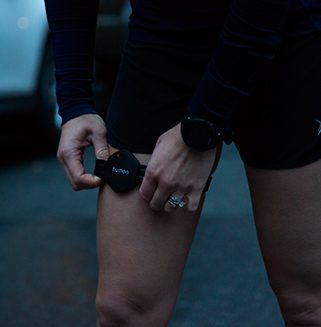
How To Optimize Your Warm Up Using Muscle Oxygen
The importance of a proper warm up before exercising cannot be underestimated. Warming up has many benefits, such as helping an athlete perform better throughout training and during competition. Here are just a few examples of the many benefits warming up has to offer:
·Increases blood flow
· Increases body and muscle temperature
· Increases oxygen intake
· Reduces injury risk
How is this article any different than other warm up articles? I am not going to focus on how to warm up effectively or the benefits in doing so, but instead I’ll provide you with information to know EXACTLY when you are optimally warmed up.
There are an abundance of articles online about warming up and one question that persists is — How do I know when I am warmed up? Being able to know when you are optimally warmed up before a competition will result in a significantly better performance. Many articles indicate that you are warmed up enough and when you feel “light” and ventilation is increased, when you are warm all over your body, and you don’t feel tense in your muscles. This is extremely vague and also completely dependent on your idea of “light” and “warm”. It is also not clear how long it actually takes to be optimally warmed up. Does it take 5 minutes, 30 minutes or somewhere in between? The answer is — it depends on a variety of internal and external factors such as the type of warm up, your fitness level, and the temperature of your environment.
So how exactly can you unambiguously determine when you are optimally warmed up? You can do this by measuring your body’s muscle oxygen saturation levels (SmO2 or as I say MuscleOx). This can be achieved using the Humon Hex, a wearable device that measures MuscleOx in real-time and provides direct feedback to your Garmin watch or smartphone.
MuscleOx is the balance between how much oxygen your body is supplying to the muscle vs. how much oxygen the muscle uses to produce energy. It is the best measure of exertion when doing endurance training because you are receiving a direct response from the working muscle.
Below is an example case using MuscleOx data of a cyclist during a warm up.

Initially the cyclist begins at a low intensity and within a couple of minutes there is a decline in her MuscleOx values. As she continues to warm up, the MuscleOx value gradually continues to rise higher than the initial value. The goal of the warm up is to increase the MuscleOx to a maximum value so that a high level of oxygen is supplied to the working muscles — providing more fuel for their workout. Once the MuscleOx reaches a maximum value and begins to plateau (as shown above), the warm up is finished.
Below is an example workout from a cyclist who has not warmed up overlaid with the previous graph.

As you can see the cyclists MuscleOx levels decrease rapidly within minutes of working out and never actually reach the maximum value they are capable of. This will reduce performance because they are supplying much less oxygen to the working muscle during the workout.
These graphs highlight the importance of completing a full warm up to perform at your best level. There is no exact amount of time required when warming up, as it will vary between athletes and the type of workout routine. Using MuscleOx to guide your workouts will show you exactly when your muscles are warmed up so that you can perform at the highest level every time while minimizing injury risk.
I hope this information will provide you all with the tools to warm up properly so that you can increase your performance during your next workout!
